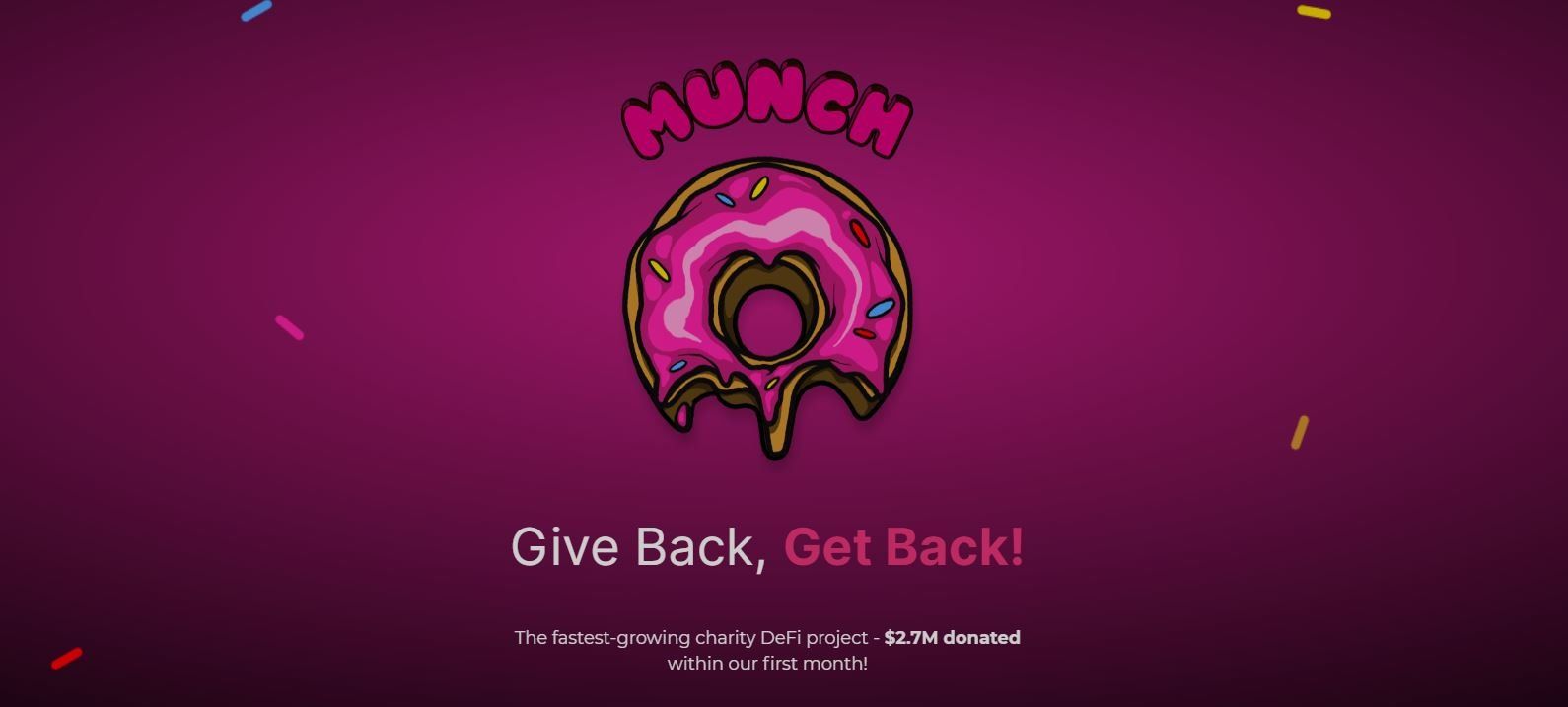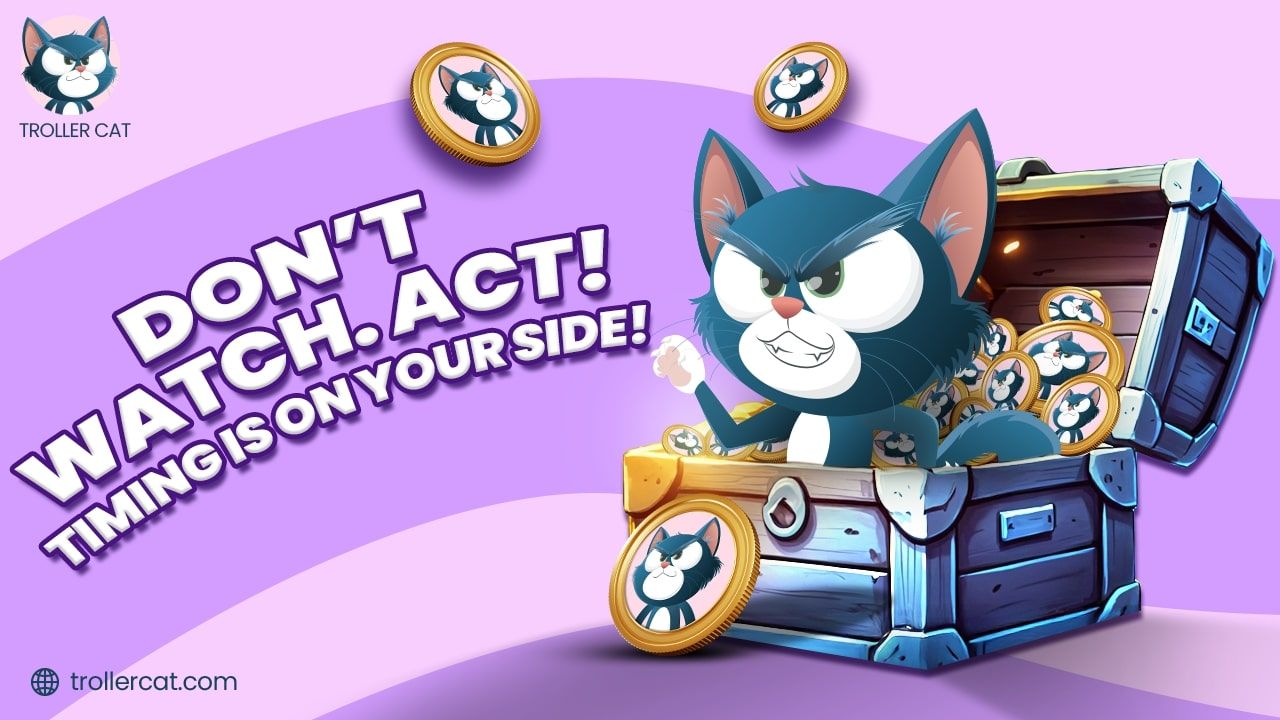MUNCH Combines NextGen Crowdfunding with Your Favorite Charities

The developers behind the MUNCH protocol want to change the way that businesses and charities access crowdfunding. This unique platform provides secure crypto and DeFi services to an international clientele with a charitable twist. The project has already helped to raise millions for good causes. Here's how anyone can get their cause on the list and why MUNCH has the potential to be the missing link between crypto and charity.
What Makes MUNCH Different?
You can spend hours scrolling through the endless DeFi platforms available today and you will notice one thing. Most of these networks have the same focus, to generate revenue for the network and the user. While both of these concerns are well deserved and should be at the forefront of any decentralized network, there are some additional interests that are worth mentioning as well.
One such concern should be the goodwill aspect of a platform. What is the overall purpose of the project? MUNCH, unlike the competition, includes this community focus within their core protocol. The network integrates a new fee structure that allocates 5% of every fee to a charitable organization.
These organizations are not randomly selected. Instead, the community takes monthly votes on what the following month’s organization will be. Additionally, each platform is carefully vetted to ensure no funds are lost to fraud.
The Proof is in the Numbers
For example, last month the Givewell Charity group received the network’s donation. Impressively, MUNCH donated +$2 million dollars for the group. This funding was raised in under 30-days and all donations were tracked by both the charity and MUNCH.
A Commendable Design
If one was to expand this same process to some of the world's top payment processors such as VISA, its easy to see how this style of economy could help charitable organizations secure billions. Specifically, VISA alone generates around $6.3 billion from transaction fees yearly. The effects would be great if even half of these fees were to get redirected into charitable organizations.
MUNCH Mechanics
The mechanics behind MUNCH are simple. The network charges a 10% flat fee on all transactions. This fee then gets split in half. The first half goes to the charitable organization and the second half is redistributed to the network users and miners. This strategy incentivizes securing the network and ensures a high level of decentralization.
Deflationary System
In addition to the fee structure, the protocol introduces a burn mechanism to provide more control over the MUNCH token's value. This system relies on a burn wallet. The wallet currently holds 15 trillion MUNCH tokens. As more transactions complete on the network, the wallet will receive more tokens. The eventual goal is to have the burn wallet smart contract hold 30-trillion MUNCH tokens.
MUNCH - It’s a Group Thing
MUNCH users get a lot of say in how the network operates. They can decide who receives donations and other vital components of the ecosystem. Their participation is accomplished through a voting protocol. Notably, users must hold MUNCH tokens to be able to vote or put forth proposals.
Each proposal goes before the community. The same goes for each charitable organization. The ones that are approved, move on to the next step of the equation. For protocol changes, that is the release of funding and the start of implementation, For charities, that is getting added to the list of approved charities or getting voted as next month’s recipient.
Transparency is King
One of the best aspects of MUNCH is that it provides a high level of transparency to users. As part of this strategy, all human interaction has been removed from the core protocols of the system. Once a charity is approved, the protocol will automatically take the fees and trade them for Ethereum tokens. These tokens are then sent directly over to the charity. All aspects of the transaction can be monitored in real-time via the blockchain.
Ethereum and Beyond
Currently, MUNCH operates on Ethereum's blockchain. This is convenient for many reasons. Primarily, it allows users to utilize DEXs like Uniswap or popular ERC-20 compatible wallets. In the coming months, MUNCH developers intend to release a BSC Bridge protocol. This will enable users to transfer their MUNCH tokens from ERC-20 tokens over to Bep-20 tokens in a seamless manner.
This maneuver would be crucial as it opens the network up to an entirely new blockchain ecosystem. This integration would allow MUNCH users to also trade on Binance Smart Change exchanges such as PancakeSwap. Notably, BSC platforms charge fewer fees and are more responsive than Ethereum-based platforms.
The MUNCH Token
The MUNCH token is how users interact within the network. This token leverages the full power of the Ethereum blockchain. It’s secure and enjoys high interoperability in the market. There are 1000 trillion MUNCH tokens scheduled for issuance at this time. The network has already secured 7699 token holders since launch.
Better than Staking
The MUNCH rewards system can give staking protocols a run for their money. It’s very simplistic. You only need to hold your MUNCH tokens in your wallet. The more tokens you hold the more rewards you receive. There are no lockup periods like staking. Additionally, the process is non-custodial, so you retain ownership and custody of your tokens.
A Fun Side
The Munch Billion Lottery is a bi-weekly event held on Tuesdays and Fridays that offers users a more light-hearted approach to the blockchain sector. Users purchase tickets for a chance at a variety of prizes including MUNCH tokens, NFT drops, and other fun giveaways. You can expect these prizes to increase in value and frequency as more people join the network.
Investors Get the MUNCHies
When you evaluate all the features and benefits that
MUNCH brings to the table it’s easy to see how and why investors continue to migrate to the platform. You can expect to see this market continue to expand in the coming months, especially when the BSC Bridge and Launchpad systems go into full effect.




